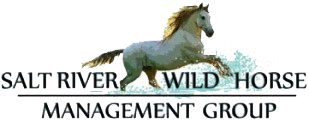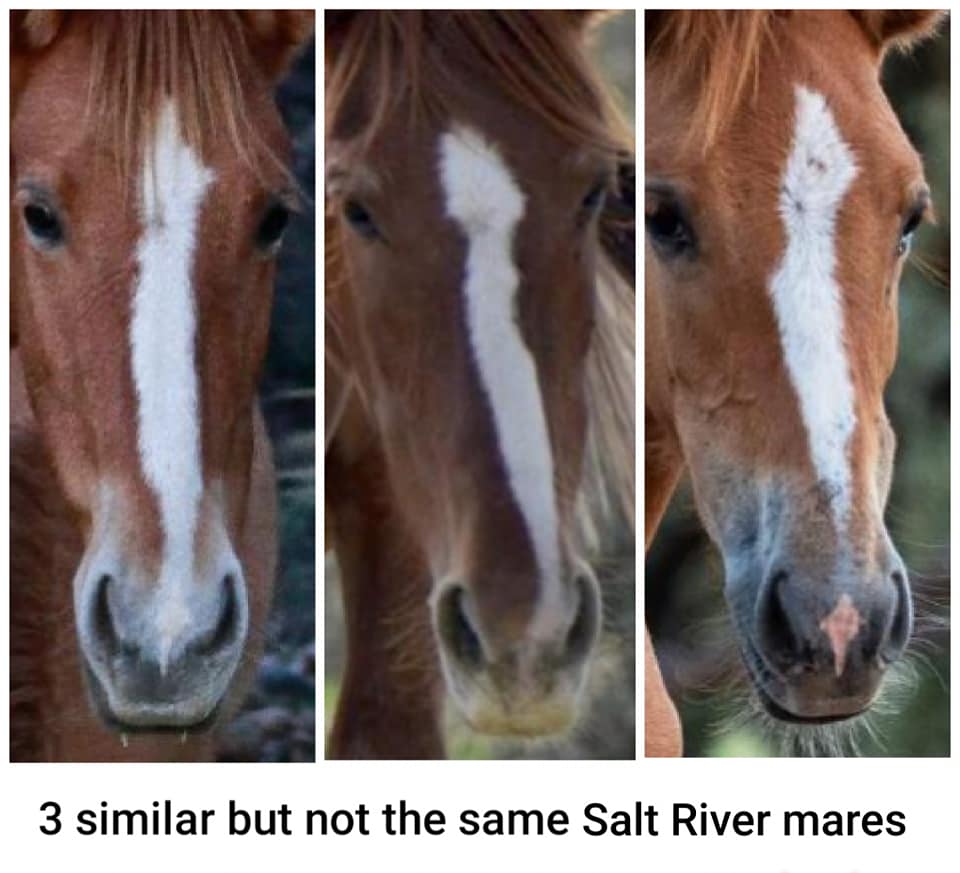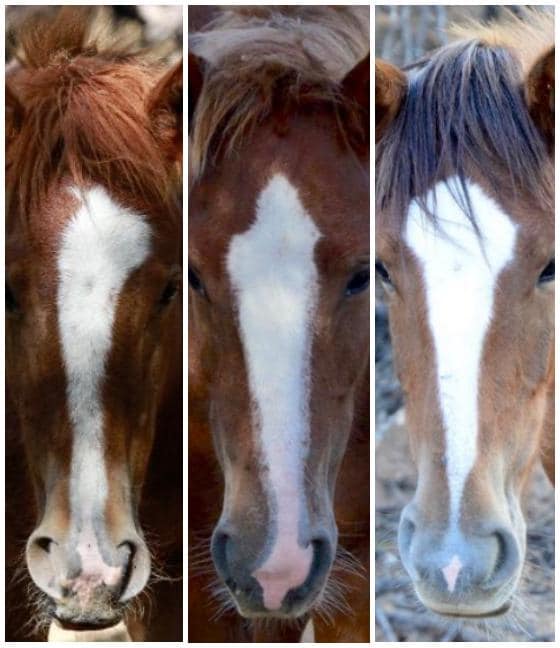Monitoring and ID-ing Salt River Wild Horses.
Can you tell which horses are the same and which are different? In these pictures you can see how similar some of the face markings can be.
Yet we need to know exactly who is who, especially with the mares, because they are all on a different PZP time schedule and they each have their own file in our database.
To distinguish them, we look not only at their face markings, but also their feet, the way their mane falls and the cowlick on their forehead. There are not two horses exactly the same, but it sure can seem like it.
We log any band changes, locations and the health of the horses in an app especially designed for our purposes. Each horse is tracked throughout its life, showing his/her parentage and offspring, his/her band history, his/her migratory patterns and any injuries or disease he/she ever had.
Because we study this herd so closely we note things that may not get noticed in any other herds, like bloodlines, disease, migratory habits, sleeping patterns, communicative behavior and exact birth and death rates. We could write a book on each subject if we had time.
Whenever we see a band, the first thing we do is count them and check each horse for health and injuries and we note their location. Whenever we have health concerns we send this over to the AZDA under which we hold the contract for their humane management.
We have recently noted a concern and we have sent that on to the AZDA. We are currently awaiting a diagnosis from the State Veterinarian and will keep you informed. Any news you hear here, will be factual and up to date information. (Any news about the Salt River wild horses you hear on any other public pages may literally be completely made up.)
P.S None of the horses in the pictures are the same horse.
Please stay tuned.
SRWHMG.




